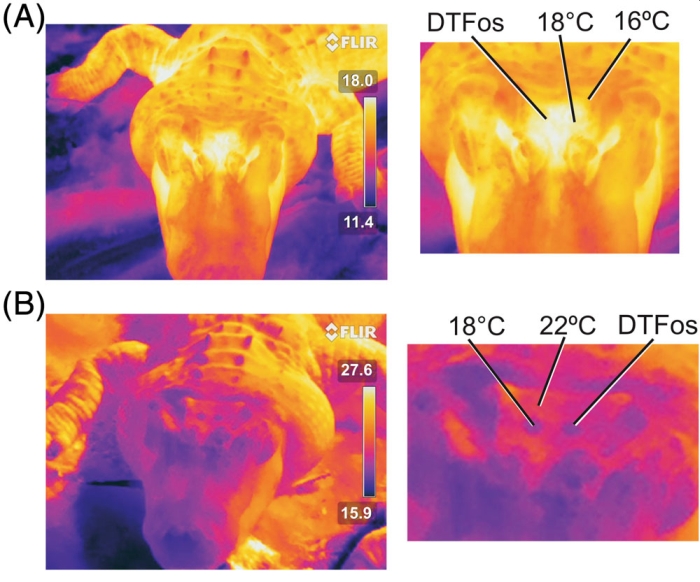Despite its popular image of teeth and claws and thunder, Tyrannosaurus rex was no hot-head. New research indicates that the two mysterious holes in the top of the dinosaur's skull likely helped regulate temperatures inside its head.
Previously, these holes - called the dorsotemporal fenestra - were thought to be filled with muscles that helped operate the powerful jaw. But, according to anatomist Casey Holliday of the University of Missouri, something didn't quite add up.
"It's really weird for a muscle to come up from the jaw, make a 90-degree turn, and go along the roof of the skull," he said.
"Yet, we now have a lot of compelling evidence for blood vessels in this area, based on our work with alligators and other reptiles."
Similar fenestra can be found in the skulls of a class of animals known as diapsids, grouped together because of this feature. This class includes not only crocodilians, but also birds, lizards, and tuatara; the holes are thought to have evolved about 300 million years ago.
Fenestra are not found in all dinosaur skulls, but those that do have them include tyrannosaurs and pterosaurs. To start figuring out what these holes were for, the team analysed different diapsid skulls to determine which ones had fenestra most similar to T. rex; the closest similarities turned out to be with crocodilians.
So, Holliday and his co-authors - William Porter and Lawrence Witmer from Ohio University, and Kent Vliet of the University of Florida - took thermal imaging cameras and went to study a bunch of alligators at the St Augustine Alligator Farm Zoological Park.
Because alligators are cold-blooded, or ectothermic, their body temperature is dependent on the temperature of their environment. This means that their thermoregulation processes are very different from warm-blooded, or endothermic, organisms.
"We noticed when it was cooler and the alligators are trying to warm up, our thermal imaging showed big hot spots in these holes in the roof of their skull, indicating a rise in temperature," Vliet said.
"Yet, later in the day when it's warmer, the holes appear dark, like they were turned off to keep cool. This is consistent with prior evidence that alligators have a cross-current circulatory system - or an internal thermostat, so to speak."
 (Holliday et al., The Anatomical Record, 2019)
(Holliday et al., The Anatomical Record, 2019)
It's not yet known whether dinosaurs in general, and T. rex in particular, were ectothermic or endothermic.
The topic is actually hotly debated, with some scientists thinking the former, some the latter, and some believing dinosaurs fell somewhere between the two - a feature called mesothermy. Previous research has suggested that the armoured ankylosaur had "crazy straw" tunnels in its skull to help keep its brain at optimum temperatures.
Now this research suggests that T. rex (and other dinosaurs) use some of the thermoregulation tactics of ectotherms, but what that actually means within the broader context of their metabolisms is yet to be explored.
What the scientists can tell, based on this research, is that there are no osteological features on the skull of the tyrannosaurus that indicate the fenestra were sites of muscle attachment. They can also infer, based on modern alligators, that the fenestra could have been used to regulate temperature in the T. rex's skull, by warming or cooling the blood that flows through blood vessels in the structures.
"We know that, similarly to the T. rex, alligators have holes on the roof of their skulls, and they are filled with blood vessels," Witmer said.
"Yet, for over 100 years we've been putting muscles into a similar space with dinosaurs. By using some anatomy and physiology of current animals, we can show that we can overturn those early hypotheses about the anatomy of this part of the T. rex's skull."
The team's research has been published in The Anatomical Record.
https://www.sciencealert.com/tyrannosaurus-rex-had-holes-in-its-head-to-help-keep-its-cool
2019-09-05 04:55:37Z
52780373348754
Tidak ada komentar:
Posting Komentar